Psalm 119 by Heinrich Schütz, his „Swansong“
„Thy statutes have been my songs“
Heinrich Schütz probably regarded his last opus as an artistic statement of particular importance: he called it his “Schwanengesang” or swansong. But the work then fell into oblivion for several centuries. Sections of the manuscript part books were not discovered until 1900 and were only used as the basis for a first reconstruction in the 1970s. The edition in the Stuttgart Schütz Edition offers a unique interpretation of the “Schwanengesang” based on the surviving sources.
The Old Testament Book of Psalms in the translation by Martin Luther was by far the most important source of texts for Heinrich Schütz. Schütz’s earliest setting of a biblical text was Psalm 100 for three choirs (SWV 36a), which was then incorporated in a revised version in the printed collection Psalmen Davids. At the end of his output stood Psalm 119, known as his “Schwanengesang” (Swansong, Carus 20.918), which Schütz completed in 1671, a year before his death. Between these two works he composed well over a hundred psalm settings, some based on individual verses or groups of verses, but also settings of complete psalms.
However, the composer’s love for the psalter does not explain his decision to turn to Psalm 119 at a great age; not only is it extremely long with its 176 verses, but it also lacks the rich imagery of the poetry which made Psalms 23 and 121 (Schütz set both of these twice) so attractive for composers. Perhaps the stimulus to set Psalm 119 came from one verse which Schütz felt particularly attracted to. It is the 54th verse which became the motto for his life as a composer of sacred music: “Deine Rechte sind mein Lied in meinem Hause.” (“Thy statutes have been my songs in the house of my pilgrimage.”) The “statutes” (or “laws”) of God are – and this is the message – transformed by the composer into a “song” i. e. into music. Schütz used this verse several times in entries in friendship albums, and a visitor reported that in his later years in Weißenfels, it was displayed on the wall of his composition study. In the fourth section of Psalm 119, verse 54 stands out for its particularly powerful setting.
Prof. Dr. Werner Breig was Professor of Musicology at the Staatliche Hochschule für Musik Karlsruhe, then at the Bergische Universität Wuppertal until 1988, and subsequently at the Ruhr-Universität Bochum until 1997. The main emphasis of his research is the music of Heinrich Schütz, Johann Sebastian Bach and Richard Wagner.
Heinrich Schütz
Psalm 119
Swansong
Complete edition vol. 18
Carus 20.918/00
Not only does this verse speak of “Ordnung” (statutes) or “Rechte” (laws), but these concepts also permeate the entire psalm in many repetitions and with various different shades of meaning. They also determine the formal principle underlying Psalm 119 and dictate its length. Psalm 119 is in fact formed of a so-called acrostic, i. e. the initial letters of its verses are part of a pattern. In the original text all eight verses of the first strophe begin with “Aleph”, the eight verses of the second with “Beth”, and so on, until all 22 letters of the Hebrew alphabet have been used eight times as initial letters. (The acrostic is naturally lost in translation.) So the total number of verses is 176 (22 x 8).
In theological literature this form has been criticized many times as contrived, as it appears to dominate the content. Amongst 20th century theologians it was Dietrich Bonhoeffer who expressed a different opinion. He felt a particular affinity for Psalm 119 and called it his “favorite psalm”. In his Meditationen über Psalm 119 which was never completed, Bonhoeffer gave the following advice to those who had difficulties with the length and many repetitions: “Here a quite slow, still, patient progress from word to word, from sentence to sentence, helps us. Then we recognize that the apparent repetitions are indeed new expressions of the one thing, the love of God’s word.”
How did Schütz the composer react to this not exactly the most music-friendly of texts? First of all, he condensed the 22 sections of the overall acrostic form into eleven sections by combining two eight-verse text elements into single sections. Each section therefore had roughly the usual length of a motet. This division is made even clearer by the fact that each section ends in the lesser doxology (“Glory be to the Father and to the Son …”). Both the psalm text and doxology start afresh each time, beginning with a unison intonation – a recourse to liturgical monody very seldom found in Schütz’s preceding works (for example, three times in the Musikalische Exequien, Carus 20.908).
It is remarkable that Schütz largely avoided strong showy contrasts or colorfulness, as are familiar from the Psalmen Davids. The whole 13-part work has a basic scoring of two four-part choirs and an organ accompaniment, mainly written according to the principles of “basso seguente”, that is, it does not have an independent function. There is no confrontation between a high and a low choir, or between solo and choral parts, and there are no obbligato instruments. Schütz set the text for eight parts in two choirs – Bonhoeffer can be quoted here – in patient “progress from word to word, from sentence to sentence” – of course with the highly expressive setting of the text as is typical of Schütz.
However, he imagined the performance as more colorful than is expressed in the musical text. We know this as he asked his pupil Constantin Christian Dedekind to add instruments ad libitum to the vocal parts. He apparently had something in mind like the additional choirs (“Capellae”) in his first psalm opus, the Psalmen Davids of 1619. Schütz’s wish was not fulfilled by Dedekind, as he was “not bold enough to presume to do this”; but today’s performers are encouraged by this to color the vocal lines with instrumental doublings in certain passages.
Heinrich Schütz
Swansong
Complete recording Vol. 16
(Rademann)
Carus 83.275/00
As well as the 11-part Psalm 119, Schütz’s last opus contains two works composed earlier: a setting of Psalm 100 and a Deutsches Magnificat. Schütz evidently wanted to include them in his complete works and if possible, secure them from the haphazardness of manuscript transmission through printing.
It was reported from Schütz’s circle that he himself described the opus as his “Schwanengesang” (swansong), obviously because he regarded it as his last and particularly important artistic statement. However, in line with his custom, he formulated the printed title page in a matter-of-fact way, and only named the text sources used in his composition.
This title page and table of contents are the only parts of the work which were printed during Schütz’s lifetime. By comparison, the musical text was only preserved in manuscript part books. These were created, as is evident from annotations in the composer’s hand, within Schütz’s circle and evidently produced by a trained musician, quite possibly Schütz’s pupil Constantin Christian Dedekind.
Of all the Schütz sources this manuscript has suffered the most chequered history and it is only thanks to some fortunate circumstances that it still exists (or, more precisely, a substantial part). After Schütz’s death in 1672 the material was probably preserved in the Royal Palace in Dresden. There, it would probably have been destroyed when Prussian troops bombarded the Palace in 1760 if it had not been moved to Guben in Lower Silesia, a town under the control of Duke Christian of Saxony-Merseburg (1615–1691) who was interested in music, and whom Schütz knew personally. (The historic part of the old town is now Gubin in Poland.) There it was stored in the library of the Haupt- und Stadtkirche where it lay forgotten for a long time.
Heinrich Schütz
Psalm 119
Schwansong
vocal score
Carus 20.918/03
When Philipp Spitta published his Schütz Complete Edition (1885–1894), although he knew from Martin Geier’s obituary of Schütz that Schütz had composed Psalm 119 in his last years, he could only state that he did not know anything about this work. Further details only emerged in 1900 when the Strasbourg theologian Friedrich Spitta, the younger brother of Philipp Spitta, was able to announce in the Monatschrift für Gottesdienst und kirchliche Kunst that six part books of a monumental double-choir work by Heinrich Schütz had been found, comprising an eleven-part setting of Psalm 119 and a two-part appendix (Psalm 100, Deutsches Magnificat). Of the eight voice parts in the work, two were no longer present and never subsequently came to light. The organ part book was also missing; however, this later ended up through the autograph manuscript trade in the collection of Stefan Zweig, and is now preserved in his collection of manuscripts in the British Library in London. Friedrich Spitta stated that the surviving material allowed “the extent of the loss to be estimated”, but in view of the fragmentary condition of the source, he evidently could not imagine that the work could ever be performed.
When Heinrich Spitta, the nephew of Philipp and son of Friedrich Spitta, published a second Supplementary Volume to the Complete Edition in 1927, he planned to continue his work with a further supplement which was to include Psalm 119. This plan did not come to fruition, probably because a quarter of the vocal parts were missing.
If the part books had remained in Guben, they would no longer exist today because the town was largely destroyed towards the end of the Second World War. The parts were brought to Berlin in the 1930s, where they were photocopied for the “Staatliches Institut für deutsche Musikforschung” and probably also remained there for a period, but after the end of the war went missing for several decades only resurfacing in the 1970s as part of the holdings of the Sächsische Landesbibliothek Dresden. That enabled the Dresden Schütz scholar Wolfram Steude to create the first edition of the work, during which he reconstructed the two missing parts. In this form the work was readily accepted by practicing musicians and, it would appear also by audiences, and has since become an established part of our reception of Schütz.
The edition of the work as part of the Stuttgart Schütz Edition published by Carus-Verlag also required a further study addressing the problems of reconstruction. As there is no clear-cut solution to this task, only different approaches, it was inevitable that the “Stuttgart” version offers other solutions in a number of places. The new version was recorded by Hans-Christoph Rademann with the Dresdner Kammerchor.

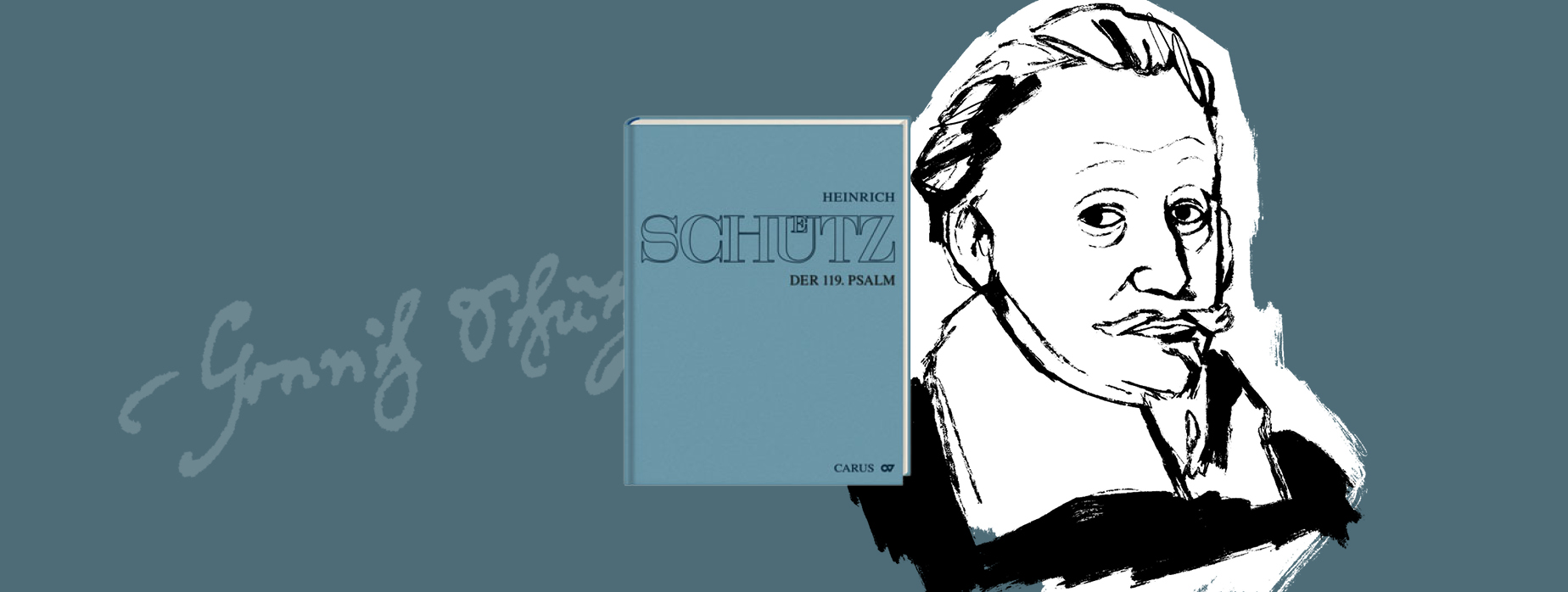

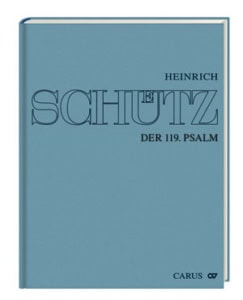

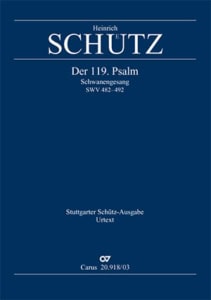
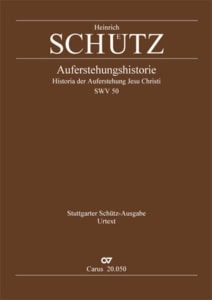 With his Account of the Resurrection of Jesus Christ, Schütz continued the approximately seventy-year tradition of composing biblical histories, which Friedrich Blume called the ‘most peculiar and historically significant achievements of Protestant music’.
With his Account of the Resurrection of Jesus Christ, Schütz continued the approximately seventy-year tradition of composing biblical histories, which Friedrich Blume called the ‘most peculiar and historically significant achievements of Protestant music’. 
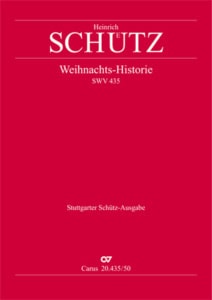
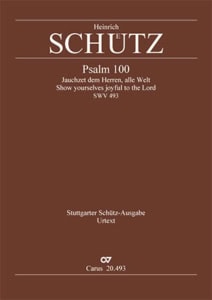
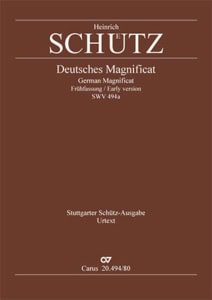

Leave a Reply
Want to join the discussion?Feel free to contribute!